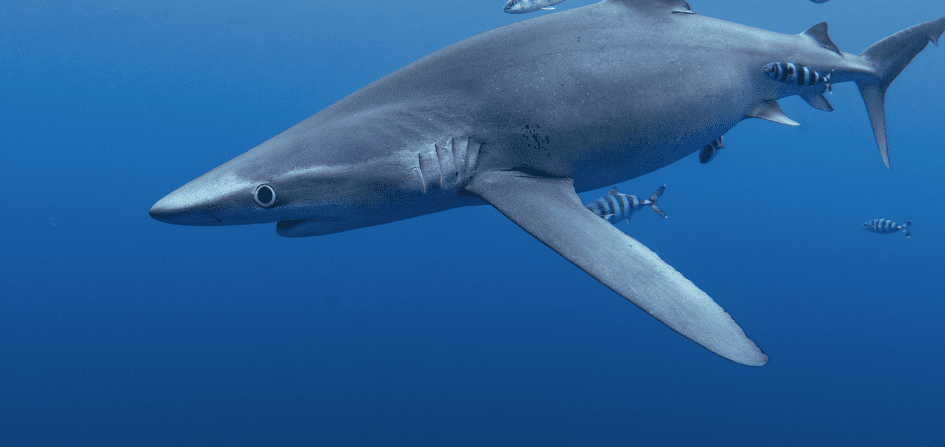
Blue sharks are one of the most wide-ranging shark species in the world, found in all oceans except the Arctic, in both temperate and tropical waters, from the surface down to depths of about 999m (3,280 ft).
The blue shark gets its name from the striking blue coloration on their back, giving them a distinctive appearance. The contrast between their white underbelly and dark blue back is called countershading and helps provide camouflage for the shark as it swims in the open ocean. Reaching maximum lengths of around 3.8m (12.5 ft) long, the blue shark′s slender body and elongated tail fins help make them one of the fastest sharks in the world.
Using their speed they prey on a wide variety of prey, including small bony fishes, such as sardines, and cephalopods like squid and octopus. Known to be more social than other pelagic sharks, groups of blue sharks often come together to feed on large schools of prey, and individual sharks will use body language to signal aggression between each other.
Blue sharks reach maturity at about five years old, and until then, juveniles typically stay in pupping areas. Males initiate mating by biting a female between her two dorsal fins, which is why females have significantly thicker skin in this area than males do. Females give birth to live pups that are each around 15 inches long, with litter sizes averaging at 25-50 pups, though much larger litters have been documented.